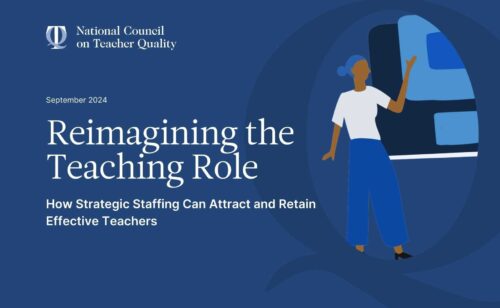Over the past 50 years, most industries have dramatically adapted their structure to better meet the changing needs of their stakeholders. Amazon shifted from an online bookstore to the world’s largest online retailer and marketplace. Fujifilm transitioned from film to digital, specializing in medical imaging. And, perhaps most notably, Netflix made the move from lending physical DVDs to online streaming. Yes, each of these industries capitalized on new technology, but—more importantly—they made profound shifts in how they operate to better serve their key
Take Netflix, for example. Moving beyond the focus on new technology, the organization completely overhauled its operations to become more effective. Netflix established new teams and workflows, revised internal structures, and skilled up employees. Their talent management depends on collaboration and shared responsibility. We see the same focus on increased collaboration and shared accountability in healthcare, where working in teams has both increased the quality of patient care and improved outcomes.2
An industry that hasn’t kept pace with the changing needs of its community? Education.
The traditional model of teaching from nearly 100 years ago is the same one we have in place today. But just as the Ford Model T automobile from that same era doesn’t serve today’s transportation needs, our outdated model of teaching is not working well for many students and teachers. Right now, most teachers work alone without opportunities to advance their careers. They describe work-related stress from too many responsibilities and too little support, and we unrealistically expect them to meet the individual academic needs of each child all by themselves.
This begins from the start of teachers’ careers, when their clinical practice is disconnected from the experiences they’ll face as new teachers and often lacks high-quality mentoring or opportunities to be part of a team. For an alternative, just look to the healthcare industry, where clinical practice is deeply embedded and prioritized, and immersive residency experiences help ensure that new physicians can provide patients with high-quality care.
In a nationally representative survey, 63% of teachers said they wanted more time to collaborate. Working alone and without the chance to grow often leads to dissatisfaction and higher turnover rates. In 1988, if you asked a teacher how long they had been teaching, the most common answer would be 15 years. Today, the most common answer to that same question is one to three years.3 We are losing talent and missing opportunities for robust clinical experiences that set aspiring teachers up for early success—and these missteps are harmful to student learning. It’s high time we reimagined teaching roles to attract and keep the best teachers in the classrooms that need them most. We have to disrupt traditional approaches to teaching roles—for both pre-service and in-service teachers—in favor of innovative solutions that better serve both students and teachers.
Strategic staffing solutions come in a variety of shapes and sizes:
- Establishing new roles that promote advancement in teachers’ careers while staying in the classroom, making the profession more sustainable.
- Creating teacher teams with specialized roles to better manage instruction and more fully tap into teachers’ expertise and teachers shared responsibility for all students.
- Allowing pre-service teachers and paraprofessionals to provide small-group instruction (under the supervision of a licensed teacher) to increase support for students’ needs.
- Making schedules flexible so students spend more time receiving the instruction they most need.
- Pairing every student teacher with a highly effective cooperating teacher for clinical practice and assigning the student teachers to other limited roles (like substitute) to supplement staffing and free up funds to pay student teachers for their work.
- Differentiating pay so that districts direct their limited resources to areas where they have the greatest needs.
Ultimately these approaches can lead to improved student outcomes and higher rates of teacher retention. Redesigning teaching roles as described above holds the promise of reducing teacher shortages, increasing teachers’ positive impact on students, and keeping strong teachers in the classrooms that need them the most.
But how do you do it in an industry that doesn’t have much of a precedence for large-scale change, especially when the stakes are so high? We aren’t talking about lost profits for shareholders. We’re talking about children’s academic and life opportunities.
Reimagining the Teaching Role: How Strategic Staffing Can Attract and Retain Effective Teachers, a new NCTQ interactive resource, offers a deep dive into specific actions that states, districts, teacher prep leaders, and advocates can take to promote the kinds of strategic staffing changes described above. It includes an analysis of policies that help—or hinder—district innovation in strategic staffing and shows where states currently stand on each policy.
We share many stories of places making a positive measurable impact on students and teachers, like Ector County Independent School District (TX), which almost eliminated teaching vacancies because its strategic staffing model was so attractive to new recruits. Another story describes how North Carolina invested in new models of teacher leadership to significantly increase student achievement in math; as a result, two in three teachers reported that the program contributed to their career satisfaction.
We have to reimagine and disrupt the status quo by tapping into all educators, including paraprofessionals and student teachers. That’s why NCTQ recently released a Clinical Practice Action Guide. Here we take a close look at the states, districts, and prep programs that are leading the way in building strong clinical experiences, including details like how places are implementing stipends for student teachers, how they’re using technology to streamline placement processes, and how they’re integrating high-quality instructional materials into clinical practices. Their stories and the many resources they generously shared show how to engage in this work without having to reinvent the wheel.
Rethinking support and roles for teachers, from before they earn a license through their career, requires disrupting the status quo—just as so many industries have done—from Henry Ford revolutionizing the automobile manufacturing process to Netflix transforming the entertainment industry. It requires creativity, persistence, a willingness to try something different—and the commitment to evaluate the results and change accordingly. For states and districts, reimagining the teaching role can improve teacher hiring and retention and may lead to better outcomes for students. Why not start now?
More like this

Reimagining the Teaching Role
Our classrooms haven’t kept pace with the changing world. The Ford Model T represented breakthrough technology in its day—more than 100 years ago—but it wouldn’t serve us well today.

Building a strong student teaching model: Districts and teacher prep programs share successes and challenges
Here’s what we learned about what’s going well and what’s been challenging in building a strong clinical practice experience, as well as which policies and supports could lead to better experiences.

Does Opportunity Culture bring students more opportunities to learn?
About 20 school districts have adopted new staffing models known collectively as Opportunity Culture, each designed to maximize the impact of great teachers. Makes sense, but does it work? Thanks to a recent study from Ben Backes and Michael Hansen, the first bit of evidence is in.
Endnotes
- Anthony, S. D., Trotter, A., & Schwartz, E. I. (2019, September 24). The top 20 business transformations of the last decade. Harvard Business Review. https://hbr.org/2019/09/the-top-20-business-transformations-of-the-last-decade
- Young, J. (2023). AMA code of medical ethics’ opinions related to interprofessional collaboration. AMA Journal of Ethics, 25(5), 361–364. https://journalofethics.ama-assn.org/article/ama-code-medical-ethics-opinions-related-interprofessional-collaboration/2023-05
- This figure represents the most common number of years of experience (i.e., the mode) not the average number of years of experience.
Ingersoll, R. M., Merrill, E., Stuckey, D., & Collins, G. (2018).
Seven trends: The transformation of the teaching force – Updated October 2018. CPRE Research Reports.

